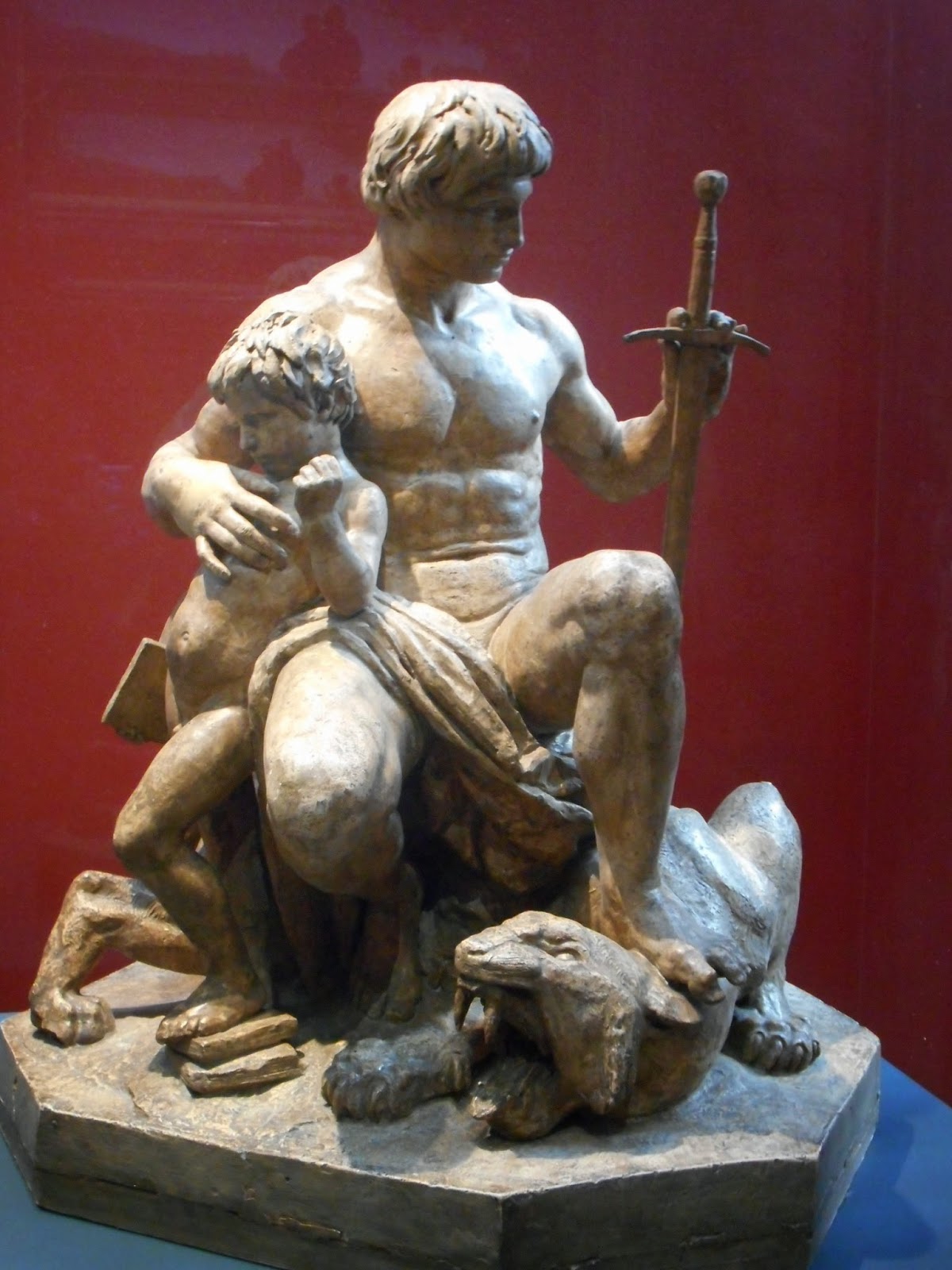William Bouguereau (1825-1905)
Equality before Death
1848
Oil on Canvas
Yesterday I had a chance to visit the world famous Musée d'Orsay. I only visited it because it was Free. Many French museums are free the first Sunday of the month. I'm not a fan of impressionist and post-impressionist art but I do like the period of French art just before Impressionism, pre 1860 art. I don't particularly like museums where you can't take photos and after I tuck the photo's you see and was told to stop by museum staff I left the museum. I usually don't take flash photography in museums as the photos here are without flash so that I would not damage some artifacts. A Flickr or Google search will confirm that hundreds of pics of this place are online, despite their photo ban. It was a particularly crowded day at the museum because it was free. Afterwards I decided to visit The Musée Rodin in the 18th century Hôtel Biron where I could take photo's inside and out.
William Bouguereau (1825-1905)
Equality before Death
1848
Oil on Canvas
Egalité devant la mort [Equality before Death]
Equality is Bouguereau's first major painting, produced when he was a young man of 23, after two years at the Ecole des Beaux-Arts de Paris. Subjected to heavy pressure from his family, the artist knew he had to succeed at any cost. As the critic Léon Plée would write later, he was then "in a hurry to make his name".
For his first submission to the Salon, Bouguereau presented this spectacular, large format painting of an angel of death covering the body of a young man with a shroud. The image would move anyone with its evocation of the inevitability of death. This sombre vision serves as a warning, as this note on a preparatory drawing demonstrates: "Equality. When the angel of death covers you with its shroud, your life will have been meaningless if you have not done some good on earth” But the equality in question is not exactly the same as that which Liberals all over Europe aspired to achieve in 1848. Bouguereau is keeping to a conservative and deeply religious idea, where equality, far from being a social or political objective, only exists in the afterlife. The painting is therefore reminding us of both Bouguereau's anxiety about the political changes of his time and his more personal doubts about his own future.
With its concise style and frieze-like structure, the painting is reminiscent of the purism of the English Neo-Classical artist John Flaxman (1755-1826). Its funereal, dramatic character also links it to the Romantics. We are reminded of the famous painting by Pierre-Paul Prud'hon (1758-1823), Justice and Divine Vengeance pursuing Crime (1808, Paris, Musée du Louvre), and more recently of work by Henry Lehmann (1814-1882), Jeremy dictating his Prophesies (1842, Angers, Musée des Beaux-Arts), featuring similarly implacable angel figures.
Internationally renowned for its rich collection of impressionist art, the Musée d'Orsay also displays all western artistic creation between 1848 and 1914. Its collections represent all expressive forms, from painting to architecture, not forgetting sculpting, decorative arts and photography. You're sure to be dazzled by the beauty of the place: a palace-like station, launched for the 1900 Universal Exposition.












































No comments:
Post a Comment